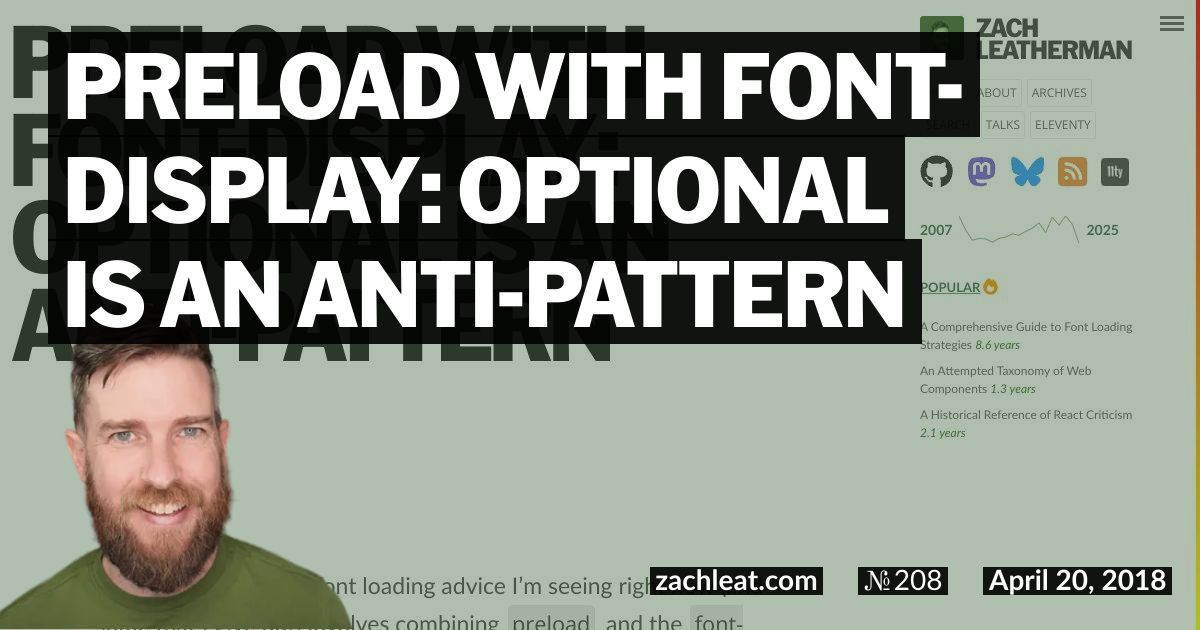preload with font-display: optional is an Anti-pattern
Most of the quick win font loading advice I’m seeing right now (and some that I give out) involves combining preload and the font-display CSS descriptor.
Just to level-set, preload is a way to trigger your web font requests sooner, putting them higher in the network request waterfall. font-display is a way to declaratively control your font loading behavior by adding a descriptor to your @font-face block.
Read more at The Comprehensive Guide to Font Loading Strategies
Lately, I’ve seen a few developers recommend font-display: optional. font-display: optional puts your web fonts on the back burner and only renders them on repeat primed-cache visits. It’s a perfectly acceptable method if web fonts are lower on the priority list for your use case’s requirements. For the record, I’m not a huge fan of optional because I like to at least attempt to render web fonts on an empty-cache visit. Caveat: in “The Compromise,” font-display: optional is emulated for browsers that do not support the CSS Font Loading API, a method to start moving away from using font loading polyfills for modern browsers.
However, after seeing some confusion on Twitter, I think it’s probably worth noting that if you decide to use font-display: optional, it would be a waste of your page’s resources to also use preload. It won’t break anything, it’ll just trigger that web font request early (causing network congestion if you have other critical path resources that need to be fetched). An early request won’t buy you much if the web fonts aren’t going to render when they finish.
preloadwithfont-display: optional: Not great ⚠️preloadwithfont-display: swap: Good ✅preloadwithfont-display: fallback: Good ✅font-display: blockwith anything: Bad 🚫
Hope that clears up some of the confusion!

